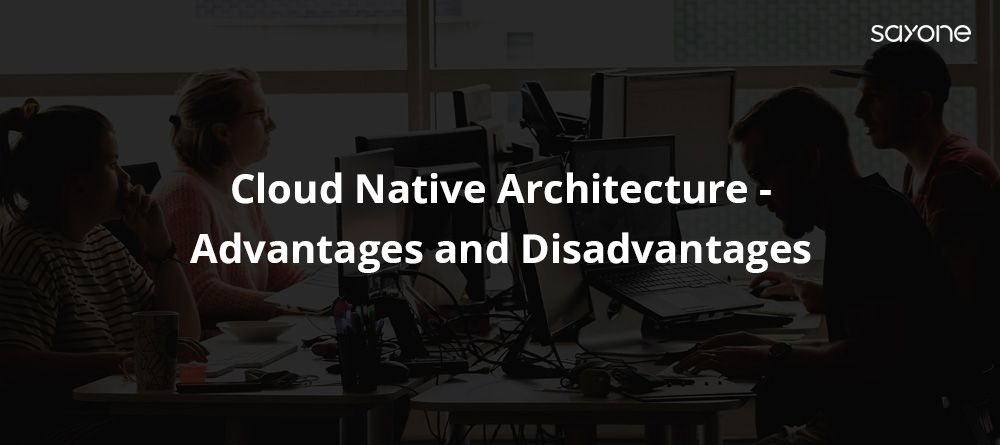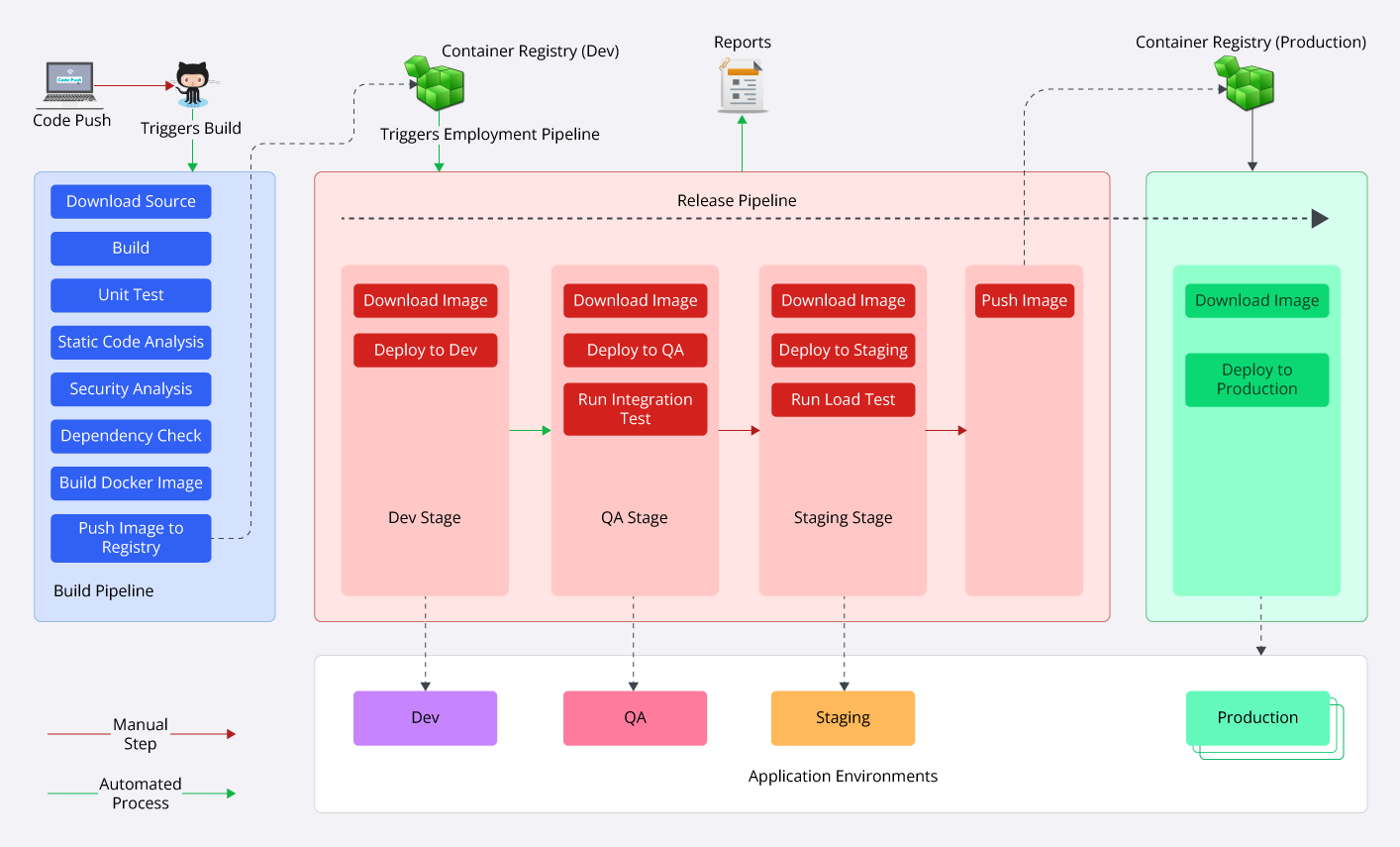
Subscribe to our Blog
We're committed to your privacy. SayOne uses the information you provide to us to contact you about our relevant content, products, and services. check out our privacy policy.

Akhil SundarFebruary 2, 20229 min read

Generating table of contents...
When we speak of cloud native applications, one should understand that it refers more to how the application is built and deployed than where the application resides. Amazon was one of the earliest organizations that broke up their monolithic websites and split the functions into smaller services.

Building cloud-native applications is among the hottest trends in software development and architecture styles today. Cloud-native architecture refers to an approach in which applications are built and run in order to fully take advantage of the cloud computing model.
Typically, cloud-native computing refers to using an open-source software stack (of applications and processes) that is containerized, facilitating transparency, reproducibility, and resource isolation. These containers can be orchestrated to dynamically manage the resources in an optimal way. The applications are generally segmented into microservices, significantly increasing their maintainability and overall agility. In a survey by IBM of IT executives and developers, 87% of respondents who are microservices users agreed that microservice adoption is worth the expenses they bring along and the effort required to operate them.
Download our Ebook “Choose the best microservices vendor and trim the costs”.
The cloud computing model packages microservices in containers and incorporates CI/CD software, as well as automated lifecycle management. Loosely coupled microservices form a key part of the cloud computing environment. Communication service providers are now increasingly using the cloud-native model to load applications as stateless microservices packaged in containers or VMs along with APIs.
However cloud native architectures might vary in detail, the majority of them include the following ideas:
Stateless Processing
A fundamental idea of cloud native apps is stateless processing, which provides great scalability and built-in fault tolerance. It involves a two-layered transaction processing mechanism. A scalable storage system is present in one layer, which is made up of a variable number of transaction pieces that do not store long-term state information. State data is securely and redundantly stored by the storage system using a variety of components.
In order to complete transactions, the transaction processing element processes state data from the state storage system and writes the updated state data to the storage system.
Microservices
An architectural technique called microservices divides large, complicated applications into smaller, easier-to-manage components. An autonomous process that interacts with other processes using a language-neutral API is called a microservice. Every service is completely separated and focused on finishing a single task.
A modular approach to developing applications is made possible by microservices designs, which facilitate the reuse and redesign of individual components. Additionally, its modularity facilitates quicker development, implementation, and scaling while supporting technical diversity.
Containerization
Using containers to create cloud-native apps has become commonplace. Linux namespaces, which are persistent partitions, are utilised by containers to preserve the separation of file systems, network stacks, and processes. Based on the namespace technique, containers are safe partitions that can run one or more Linux processes. The host's Linux kernel facilitates these procedures.
Virtual machines (VMs) and containers operate similarly, but containers offer far greater flexibility. Although virtual machines (VMs) can only be installed with the assistance of a complete operating system, applications can be supported by containers through software packaging. Developers may add applications with ease thanks to this packaging strategy. The fact that containers are less resource-intensive and require less maintenance than virtual machines (VMs) is another significant distinction. They have increased portability, easier deployment, and faster startup times.
Automation
Cloud native designs make it easier to automate infrastructure, which helps developers build pipelines for continuous integration and delivery (CI/CD) and speed up processes like scaling, deployment, and recovery. The building, testing, and deployment stages of the development lifecycle are automated via a CI/CD pipeline. Automation of procedures like rollback, recovery, canary deployment, and monitoring is also supported by cloud native systems.
Communication and Collaboration
Communication and interaction between cloud native services and external services are essential. Applications that are cloud native can communicate with legacy or third-party apps thanks to APIs, which are usually RESTful APIs.
By creating a specialised infrastructure layer known as a service mesh that manages internal communications, microservices can make management and communication easier. A service mesh's primary functions are to link, secure, and keep an eye on services in cloud-native apps. Several open source implementations of service meshes are available, while Istio is the most commonly used one.
Defense in Depth
Traditional application architectures mostly rely on a security perimeter to keep unwanted users out. To prevent both internal and external threats, an organisation cannot rely solely on a single layer of defence, no matter how hardened its network may be. Opening up the network to mobile devices and remote access in order to meet user needs presents another difficulty for the typical network perimeter approach.
Since cloud native designs by definition make use of Internet services, they need to be equipped with internal defences against outside threats. Defence in depth is a security strategy that focusses on the internal security of the system and is based on the military tactic of delaying an attack with many layers of defence. This eliminates implicit trust between components in computer environments by imposing authentication difficulties across all network components.
In addition to authentication, cloud native architectures can expand the concept of defence in depth to script injection and rate-limiting. Even when a component is a part of the same architecture, it still needs to defend itself against all other components. By using this method, cloud native architecture becomes more robust and allows enterprises to launch services in cloud environments without requiring a trusted network to connect users and services.
If you plan to leverage cloud-native features in your IT systems, you can enjoy many advantages. However, they also come with an attached cost. This depends a lot on the applications and the data generated. Sometimes, going cloud-native may not be economically viable for you. Let us briefly examine the pros and cons of going cloud-native.
The pros of going with cloud-native features include the following:
As far as performance is concerned, being able to access native features of public cloud services will help to provide better performance than non-native ones. It is easier to handle an I/O system with autoscaling and load-balancing features when using a cloud-native application. This makes for easy scalability.
Cloud-native applications use features and APIs so as to make efficient use of the underlying resources. This shows up as better performance at lower costs.
Cloud-native applications cost less to run and are more efficient. Service providers work on a monthly charge according to the resources that you use. So you pay only as much as you use, and this leads to savings as overheads are lower.
Read our blog“How to hire the best microser vices developers from other countries”.
If you run an on-premise software application and it experiences peak hours, your infrastructure has to be one that supports the peaks. A lot of the infrastructure will lie idle during non-peak hours, increasing costs. With cloud computing, you can scale when the peaks occur and scale back later, leading to lower costs.
Do you want to deploy, manage, and scale up your mobile/on-premise/cloud microservices applications? Call us today!
Cloud-Native is complex. Reworking and moving an existing application to the cloud is not an easy job. They have to be re-architected for the cloud, and organizations also require the underlying infrastructure that is required to support this migration.
Another cost is giving up portability. Applications that have been localized for one cloud platform cannot be easily ported to another cloud platform. This involves a large amount of rewriting the software and refactoring the code. Therefore, for all practical purposes, you are locked into one cloud platform.
Read our blog : Which is the right cloud service model for your business
When applications are scheduled to run on a specific cloud platform for many years, you can get your investment back. The advantages of going cloud-native are specific and can be judged on a case-by-case or application-by-application basis. There are no readymade checklists that you can use, but instead, decide what is best for you according to the trade-offs you are ready to adjust to.
Microservices come with their own operational complexity. When you go cloud-native, you are effectively trading off individual developer productivity in exchange for a complex system.
End Thoughts
Business systems for the future need to evolve from merely enabling business capabilities to tools of strategic transformation, accelerating business velocity and growth. For businesses to survive, it is imperative to get new ideas to the market at the earliest possible. The cloud-native model suits that requirement perfectly.
How SayOne Can Help
At SayOne, we offer independent and stable services that have separate development aspects as well as maintenance advantages. We build microservices specially suited for individuals' businesses in different industry verticals. In the longer term, this would allow your organization or business to enjoy a sizeable increase in both growth and efficiency. We create microservices as APIs with security and the application built-in. We provide SDKs that allow for the automatic creation of microservices.
Our comprehensive services in microservices development for start-ups, SMBs, and enterprises start with extensive microservices feasibility analysis to provide our clients with the best services. We use powerful frameworks for our custom-built microservices for different organizations. Our APIs are designed to enable fast iteration, easy deployment, and significantly less time to market. In short, our microservices are dexterous and resilient and deliver the security and reliability required for the different functions.

We're committed to your privacy. SayOne uses the information you provide to us to contact you about our relevant content, products, and services. check out our privacy policy.

About Author
Subject Matter Expert

We collaborate with visionary leaders on projects that focus on quality